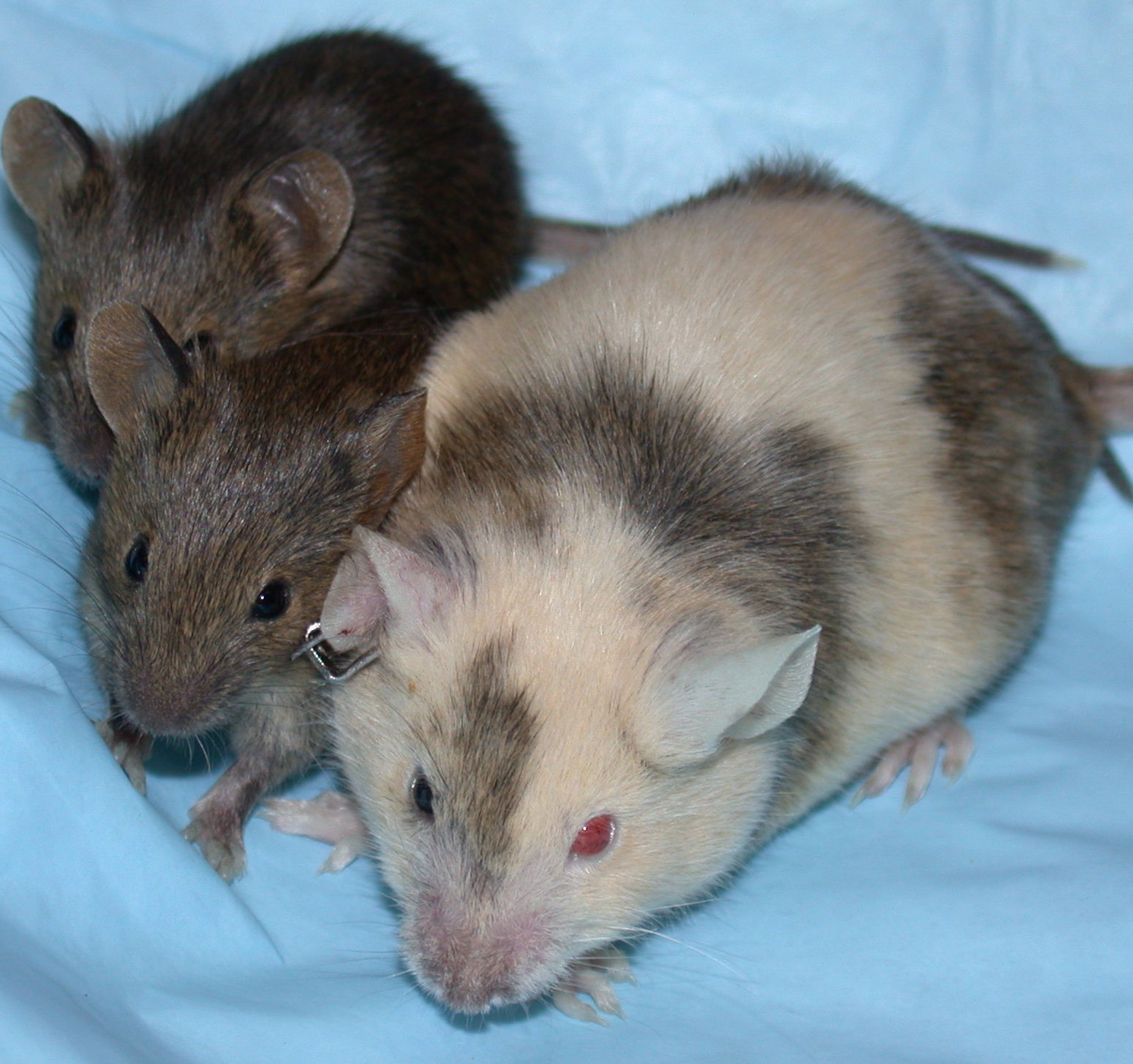This topic takes on average 55 minutes to read.
There are a number of interactive features in this resource:
 Biology
Biology
 PSHE / Citizenship studies
PSHE / Citizenship studies
 Science (applied)
Science (applied)
Mice are incredibly useful tools for scientists investigating how healthy human beings work, and what happens in disease. There are three main ways in which mice have been manipulated to make them more useful as human models:
1. Selective breeding
Careful inbreeding has led to strains of mice which are genetically stable for specific characteristics. They are not clones, but they are genetically almost identical. Scientists have about 100 strains of mice available to them, each with a particular genetic makeup and in some cases a particular tendency to develop diseases such as cancer.
2. Transgenic mice
These are genetically engineered mice which have foreign DNA such as DNA from human cells inserted into their genome. So for example, the mouse may make a different protein. This technique allows scientists to investigate the function and regulation of specific genes, and investigate human diseases such as Alzheimer’s disease. Two main techniques are used to make transgenic mice. In one, the new gene is added to a fertilised ovum, so the whole mouse which develops is transgenic. In the other, the new gene is added to embryonic stem cells which are then added to a host embryo, which is almost always a different coloured strain of mouse. The mouse which results is known as a chimera, because it is a mixture of two organisms. Some of the eggs and sperm will carry the engineered genes so by breeding these mice scientists can produce a strain with the engineered genes present in every cell of the body.
3. Knockout mice
Knockout mice are becoming increasingly important as disease models. Gene editing enables scientists to inactivate or ‘knock out’ specific genes in mouse embryonic stem cells. These cells are grown on and then injected into early mouse embryos. The resulting mice have some knockout cells and some normal cells. As with transgenic mice, researchers then cross breed to achieve homozygous knockout mice. These mice have been developed to mimic human diseases including different types of cancer, obesity, heart disease, arthritis, diabetes, Parkinson’s disease and ageing. There are limitations – sometimes a gene affects different tissues or behaviours in mice to those it controls in humans. But the potential value of knockout mice is both increasing our understanding of disease and finding effective treatments.

Mice are surprisingly similar to people – almost every gene in the human genome has an equivalent in the mouse genome.

A chimeric mouse with its offspring. Chimera mice are named after the chimeras of Greek legends, mythical beasts with a lion’s head, a goat’s body and a serpent’s tail!
As with GM plants, there are concerns about the use of GM animals in medical research. Some people raise concerns based around animal welfare: whether pain will be inflicted on transgenic animals, the large number of animals required for genetic experiments and the invasive procedures carried out on them. The extent to which GM blurs the line between species is also of concern to many people. Some of the ethical concerns are related to how humans will use (or misuse) the technology: will it be accessed by those whose quality of life will directly benefit, or by those who will gain only economically?
Genetic engineering in humans is already occurring in the form of somatic gene therapy. This is a way of treating a genetic disorder, but it only works if the gene causing the disease is known, and if the replacement of this gene is likely to work as a treatment. A number of different processes are covered under the name ‘gene therapy’: replacing a mutated copy of a gene with a healthy one, inactivating a malfunctioning copy of the gene, or introducing an entirely new gene into a cell. Somatic gene therapy only alters the genetic material of the affected tissues in the patient; germ cell therapy results in the genetic change being inherited by the patient’s descendants, so many people believe this should be banned until more is known about the technology. Somatic cell therapy isn’t just restricted to treating genetic disorders: it has been proposed that athletes from many different sports might be tempted to use ‘gene doping’ to gain a competitive edge.
At the moment gene therapy is in its infancy. Success stories are just beginning to emerge. If we can get it right, gene therapy of both plants, animals and humans could play a huge role in the future of medicine.